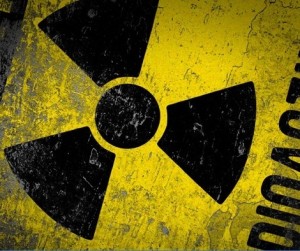Tokyo Electric Power officials received in 2008 an internal report showing that the the Fukushima Daiichi Nuclear Power plant could be threatened by a tsunami of up to 10.2 metres. However
TEPCO officials rejected the report saying that such an threat was "unrealistic".
Because TEPCO the operator of the Fukushima Daiichi Nuclear Power Plant ignored the warnings made in the internal report nothing was done to better protection against seawater if a big tsunami occurred.
The internal report show that the complex was at risk of damage from a tsunami of the size that hit north-east Japan in March, and dismissed the need for better protection against seawater flooding.
Tsunami at The Fukushima Daiichi Plant Photograph: Reuters
The tsunami that took out Fukushima and the Daiichi Nuclear Power Plant on the afternoon of 11 March was more than 14 meters high and lead to the destruction and full meltdown of the reactor units.
Masao Yoshida the man in charge of the department overseeing the plant's management in 2008 when the 2008 internal report was submitted, has since been credited with preventing a more serious accident in March.
However now with the evidence showing that the Fukushima Nuclear Power Plant was unprepared for the tsunami, despite the previous reports and warnings, Yoshida is now leaving his post. The manager of the Fukushima plant, Masao Yoshida is now being treated for an unspecified illness and will leave his post on Thursday.
TEPCO in the meantime refuse to disclose what Yoshida's illness is and many are now guessing that it's something to do with radiation sickness. But what is said is that it is not related to his exposure to radiation during the nine months since the Fukushima Disaster began. Yoshida said "On doctors' advice, I have no choice but to be hospitalised for treatment," "It breaks my heart to have to bid farewell in this way to all of the people with whom I have worked since the disaster."
After the tsunami Yoshida approved the continued injection of seawater into one of the damaged reactors, despite being told to abandon the measure by Tepco officials. He was later reprimanded, but won praise from experts who said he had helped cool overheating fuel rods and prevent a worse disaster.
The 40-year-old Fukushima Daiichi Nuclear Power Plant was built on the assumptions that the biggest tsunami that could be expected Fukushimas coast would be 5.7 metres high. Even at that height, the 2008 report said, water levels on site could exceed 15 metres.
There is ongoing discussion what illness Yoshida have for the moment being and with citizens upset that the warnings made back in 2008 fell on def ears.









No comments:
Post a Comment